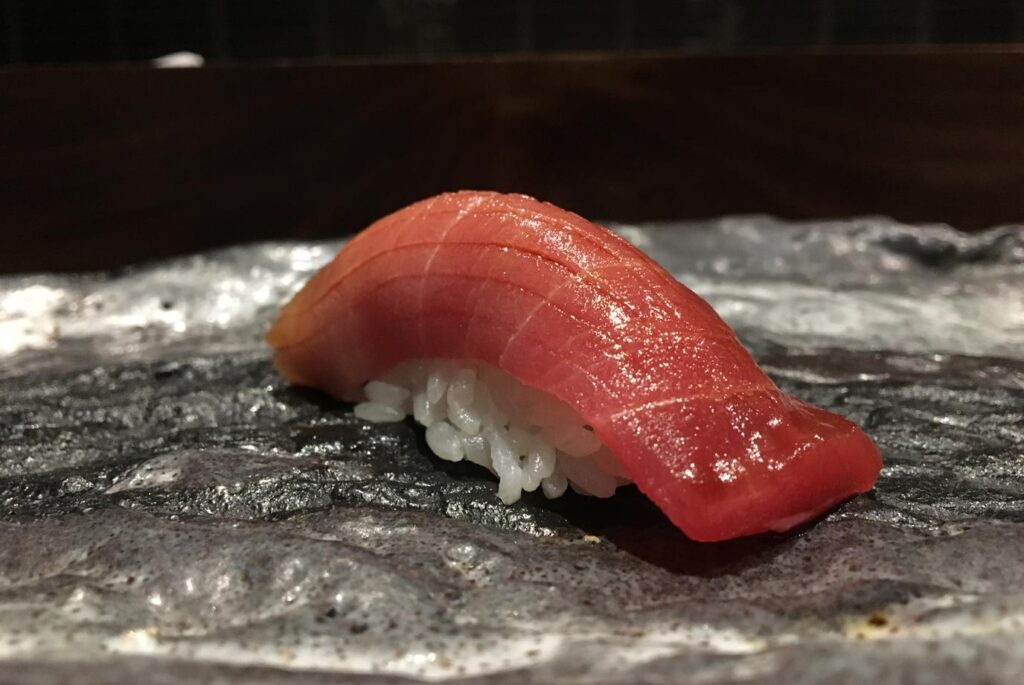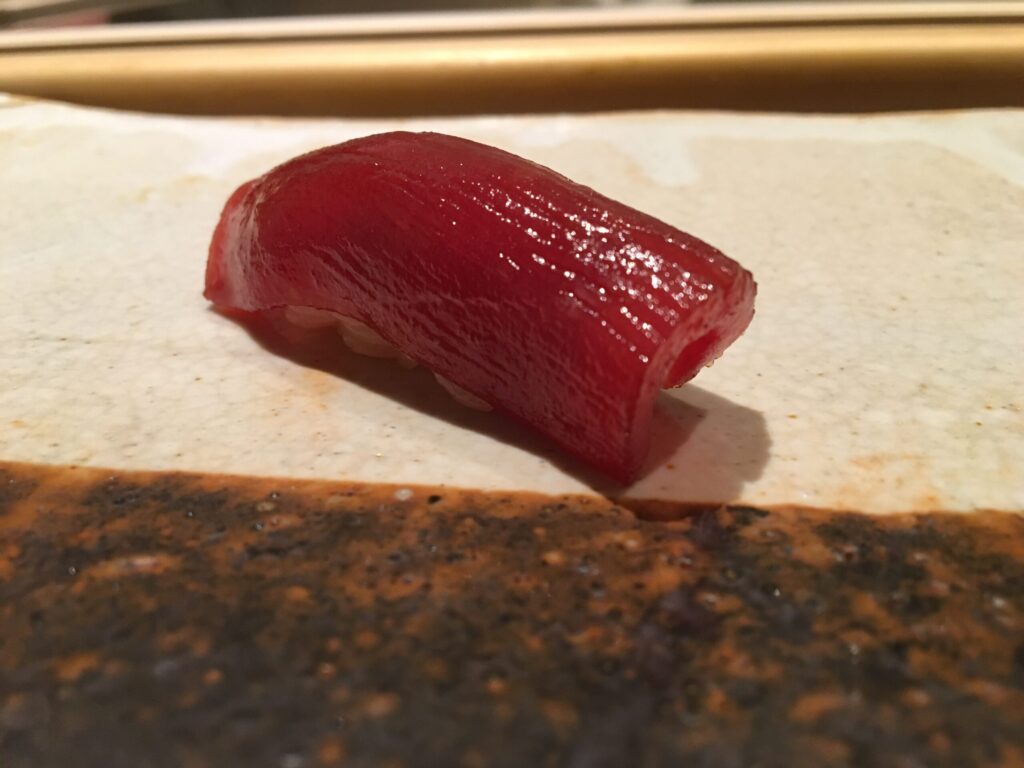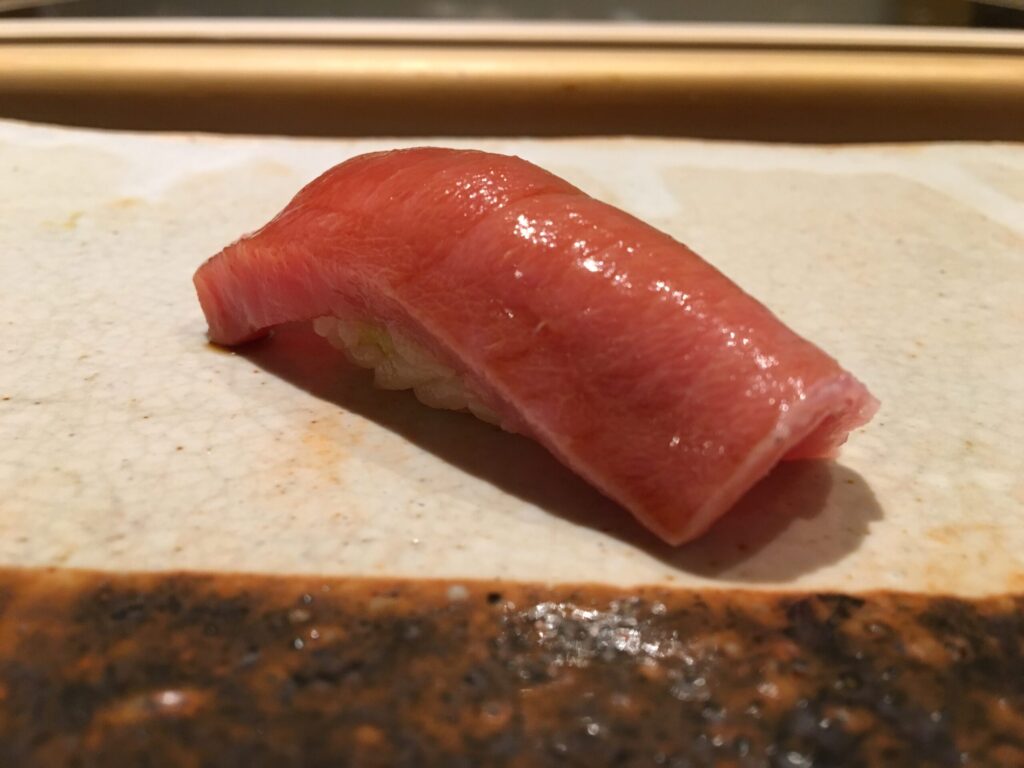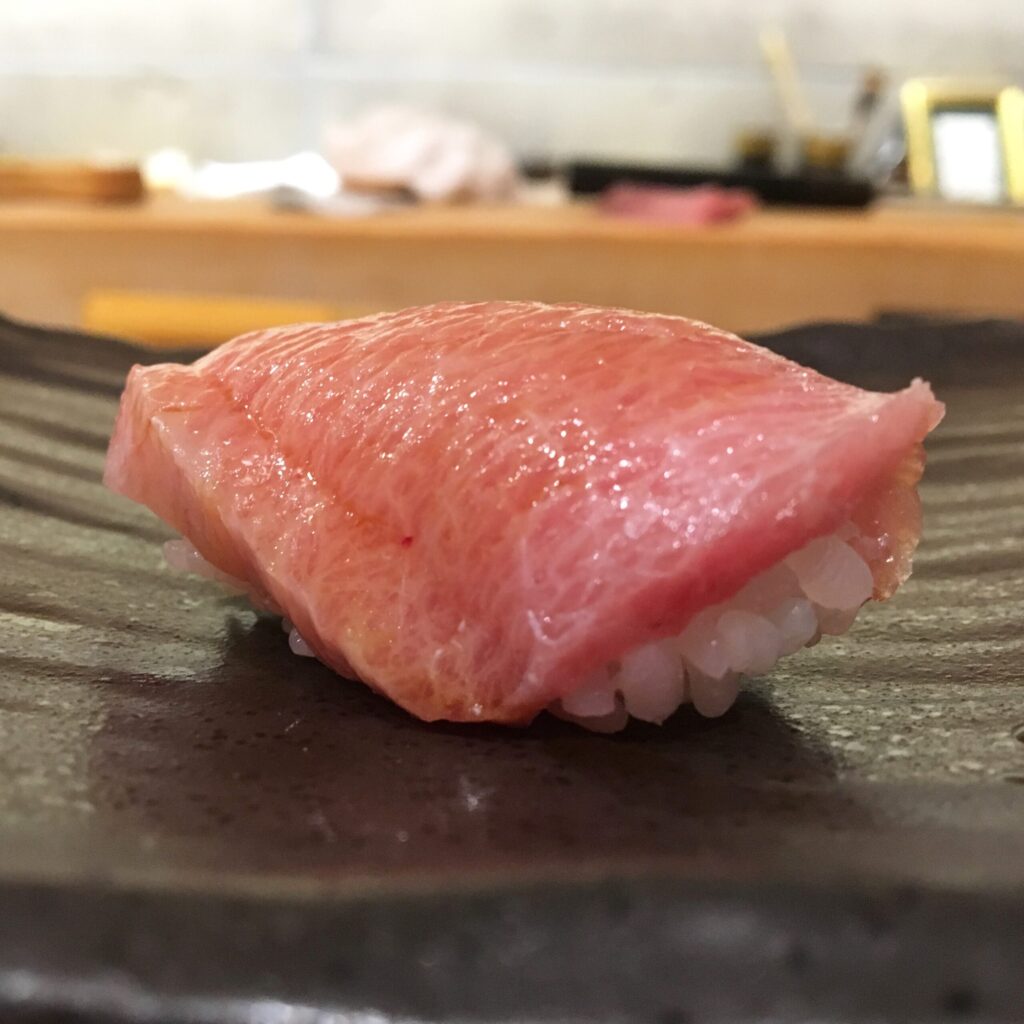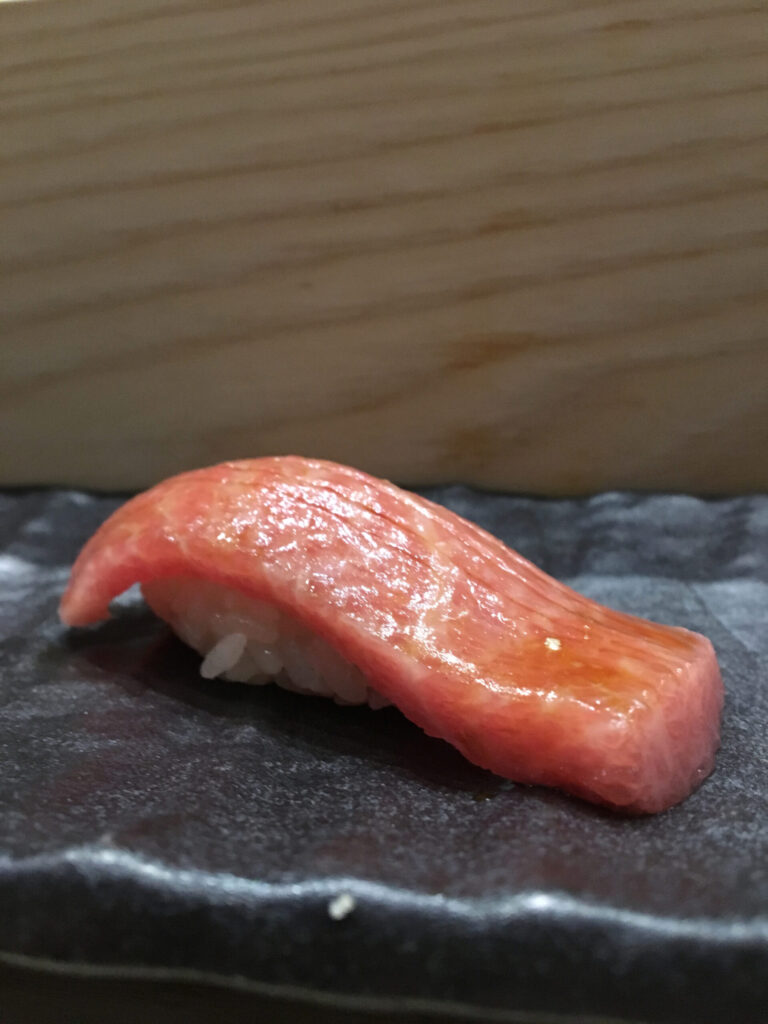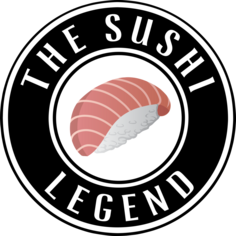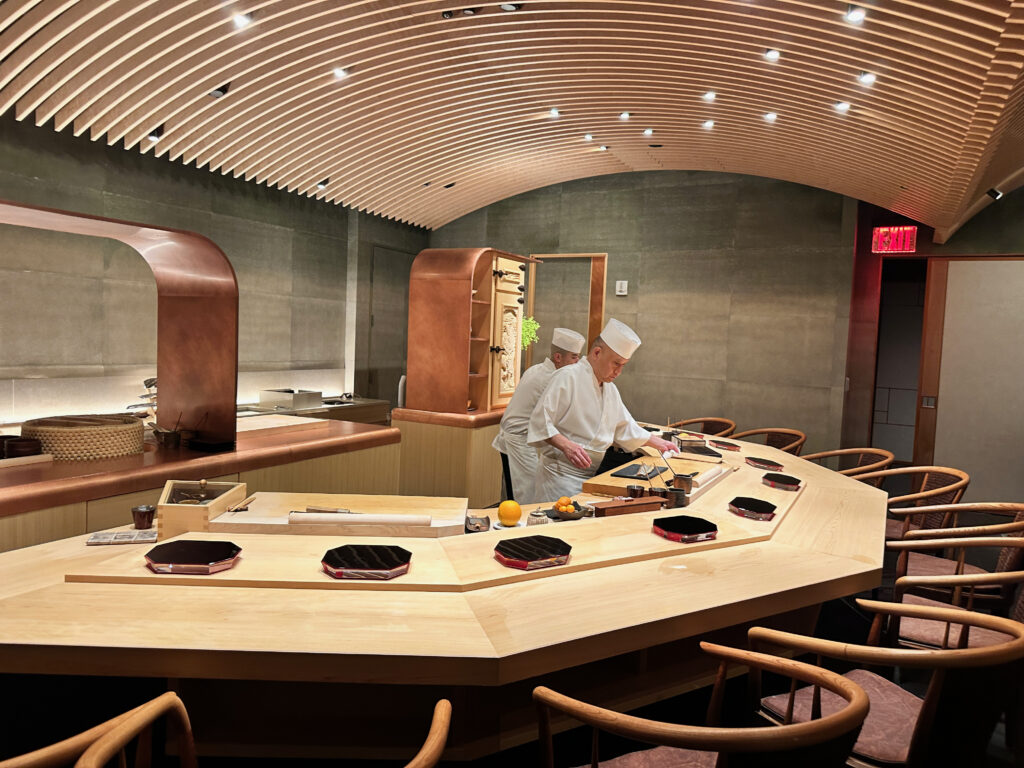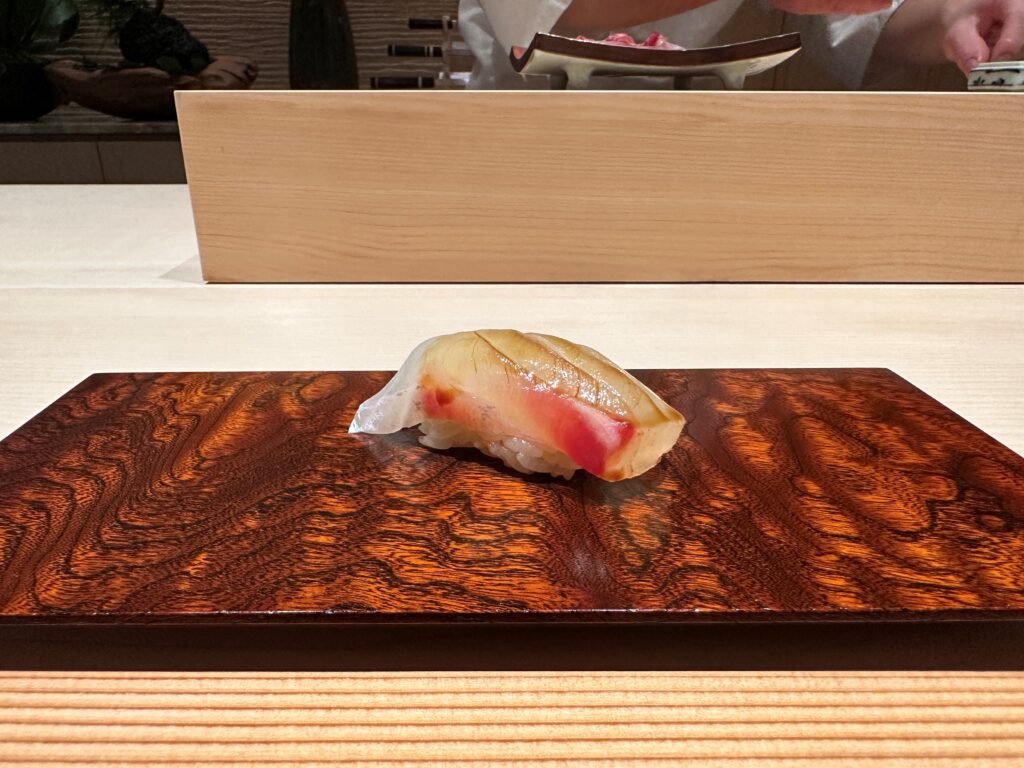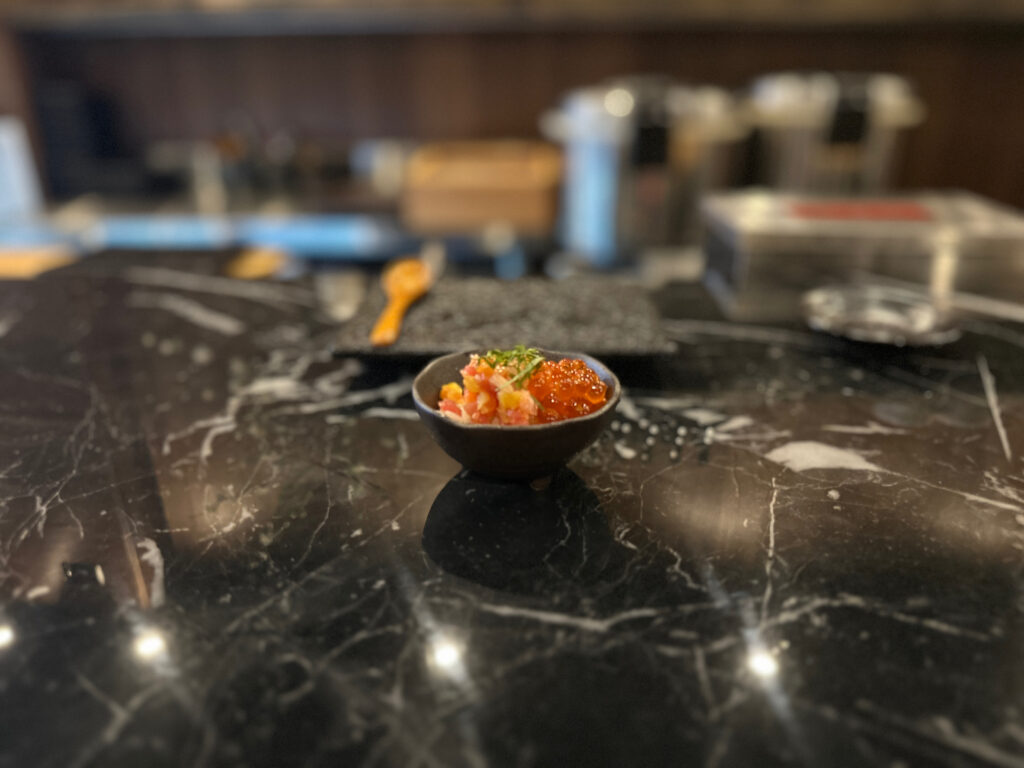マグロ | Tuna
Type: Akami
Season: All year..
Perhaps no fish in the sushi world inspires a greater sense of wonder than that of the Tuna, the Maguro. For many, the quality of a sushiya is judged first (and only?) by the quality and cuts of its Tuna. Part of the reason is tradition. Tuna has always been part of traditional Edomae Sushi, and many chefs pride themselves on serving the best Tuna from local Japanese waters, though I’m told those Tuna spawn as far south as Taiwan.
The other reason for the reverence is the quality and variety. The leanest part of the Tuna is generically called Akami, because of its red flesh, but you’ll likely be familiar with Chu-Toro (think medium fat) and O-Toro (stronger fat) as well, both from closer to the belly area. I like to say that picking a favourite is like deciding on dessert: do you want a small amount of decadence or a large dose of enhanced flavor? As always, it depends on what you’re in the mood for.
As you navigate through the world of Tuna, there are plenty of other terms to be familiar with: Hon-Maguro (Bluefin Tuna), Kama-Toro (the jaw), Zuke (marinated Tuna) and Meji (baby) are all important to remember.
Here’s what you shouldn’t remember: White Tuna. You may have seen that one, two or fifty times at your local spot. Doesn’t exist. What you’re actually eating is either Escolar or (more rarely?) Butterfish.
One more time: White Tuna does not exist.
Last, the seasonality. Tuna Is in-season year-round, particularly if your Tuna is fished from spots like Spain or the East Coast of Canada. That said, certain cuts (like Akami) are better at certain points of the year and may even look completely different season-to-season. No book encompasses that better than “Sushi Chef Sukiyabashi Jiro”. If you’ve seen Jiro Dreams of Sushi (like many have), you’ll be familiar with the importance the world-famous chef places on Tuna. A recommended read.
